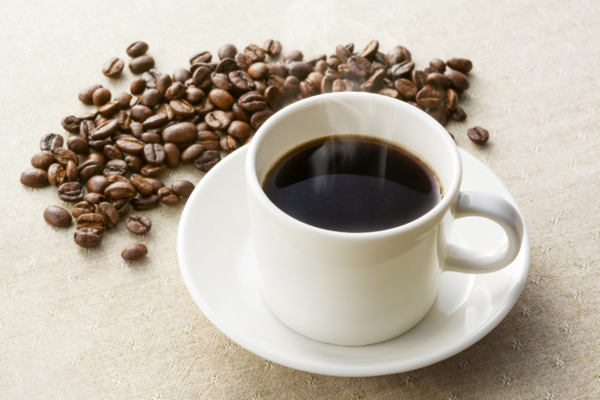In various parts of the world, coffee is a popular beverage, but how it is brewed and consumed can vary greatly depending on the region. For example, Americans often carry take-out drip coffee with them on the go, but in many other places, such as certain regions in Europe, this practice is not as common.
According to a report by the Huffington Post, while some people occasionally grab a to-go coffee, many prefer to enjoy their coffee in a café with a cup. Whether sitting alone, with a group of friends, or standing at the bar, and whether it’s during the commute to work, for these individuals, drinking coffee is an activity done in a café setting.
Jack Foster, the operations manager and co-owner of a coffee shop in the UK, mentioned, “The culture of take-out coffee is often influenced by lifestyle. For example, in Italy, people are used to standing at the bar and quickly enjoying an espresso. This fast, social, and cost-effective habit is deeply rooted in Italian culture.”
He continued, “Customers in countries like Austria or France prefer to sit down leisurely and savor their coffee, often paired with pastries. Similarly, this is a choice influenced by the lifestyle of certain cities and communities.”
Regarding the take-out coffee culture in the US, several coffee experts shared their perspectives and explained the differences compared to other regions where the take-out culture is not as prevalent.
Alexa Lindsay, a brand manager of a coffee brewing company in the US, highlighted the distinct differences between European and American coffee cultures. In Europe, the coffee scene is characterized by a slower pace that encourages conversation and engagement, while in the US, the emphasis is on speed and efficiency. Both cultures share a common key element, which is convention.
Laila Ghambari, a former US Barista Championship winner and current coffee industry consultant, mentioned that in Italy, people typically enjoy a 6 to 8-ounce cappuccino or a 2 to 4-ounce espresso. These small-sized drinks can be easily enjoyed in ceramic cups at a café, usually finished within minutes.
In contrast, in the US, large coffee chains (such as Starbucks) serve coffee in 16, 20, 24 ounces or more, which are not for immediate consumption. Additionally, with many Americans commuting by car, they opt for drive-thru coffee.
Data from the research company ScrapeHero revealed that as of July 1, 2024, there were a total of 16,621 Starbucks stores across the US, with California having the most at 3,133 stores, accounting for approximately 19% of all branches nationwide.
Ghambari also noted that in the US, taking a break to enjoy food and drinks is not as welcomed, and people often multitask, eating while working on their computers. However, in Spain, companies take a break for lunch, and in Sweden, people enjoy coffee and snacks during breaks.
She encouraged Americans to savor coffee in cafés, not only to pause and enjoy the moment but also to reduce waste. Due to the take-out culture, cafés generate a significant amount of waste.
Paulo Peres, who grew up in Brazil and currently serves as a senior executive in a specialty coffee importing company in the US, shared that in Brazil, people prefer to sit in a café and engage in prolonged conversations while enjoying their coffee. It’s a very social experience, rather than taking coffee in a disposable cup on the go.
Bruna Costa, one of the founders of a café in the UK with dual Brazilian and Italian citizenship, mentioned, “In Italy and Brazil, people usually prefer to stop and enjoy a cup of coffee in a proper cup, regardless of the coffee’s quality.”
Glendy Alejandro, a chief barista at a café in Chicago, who grew up in Guatemala, expressed surprise at the hurried café culture in the US when she moved to Chicago in 1995.
She noted that in Guatemala, people would drink coffee from ceramic cups without milk at any time of the day, unlike what she saw in the US with the prevalence of iced and hot lattes. Adapting to the fast-paced lifestyle in the US, these coffees are often served in take-out cups.
Mark Morphew, a coffee expert who lived in the Philippines for 12 years, shared that the coffee culture in the Philippines is more leisurely. Cafés serve as social hubs, away from the high temperatures and humidity, and baristas take pride in crafting each beverage meticulously.
He explained that while many Americans drink coffee primarily to stay energized with caffeine, in Southeast Asian countries like the Philippines, coffee drinking is a cultural habit.
Shonali Paul, who opened a café in the US serving Indian flavored coffee, noted significant differences between the take-out coffee culture in the US and what she observed in India.
She elaborated, “In India, it’s common to take a coffee or tea break, especially on workdays, which prompts people to step outside their offices for a cup. Therefore, you’ll see many small coffee shops and tea stalls outside large office buildings. People move away from their desks, stand near the shop, and engage in conversations with colleagues.”
She added, “As part of Indian culture, food and beverages are highly social concepts. Most Indians don’t eat or drink alone while commuting to work; instead, they enjoy meals with family at home, with colleagues at work, or with friends after work. It’s more of an experience than just a product.”

